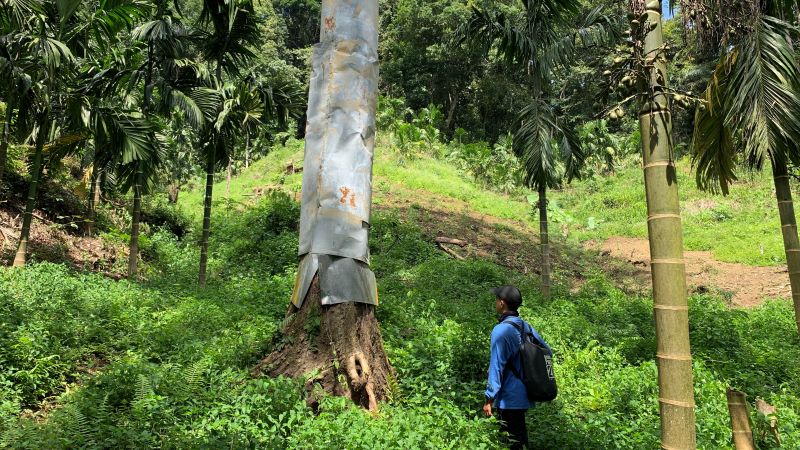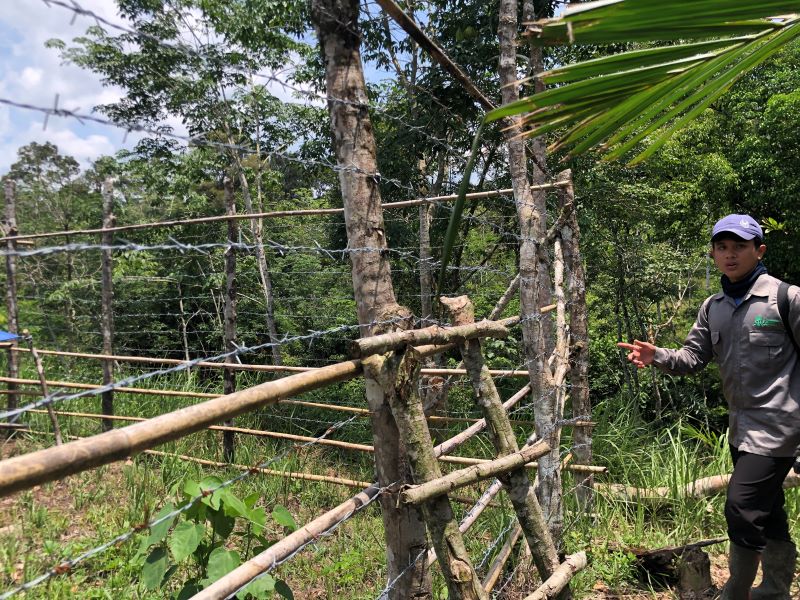In the villages of Lau Damak, Batu Jongjong, and Ujung Bandar within the buffer zone of Gunung Leuser National Park in North Sumatra, conflict mitigation initiatives spearheaded by the Sustainable Green Sumatra Foundation (YSHL) are ensuring a more harmonious relationship between humans and wildlife, with a special focus on the conservation of orangutans. First-quarter reports from YSHL regarding aspects of their fourth year of the Community Education and Conservation Program (CECP) have indicated that regular monitoring and engagement in areas prone to conflicts between wild animals and residents have been yielding positive results.
Residents in these villages occasionally encounter visits from orangutans, macaques, and bears, but the presence of orangutans is generally not perceived as disruptive due to the minimal losses incurred. However, the same cannot be said for long-tailed macaques, pig-tailed macaques, and Thomas’s leaf monkeys, which tend to appear in groups and occasionally cause significant damage. To address these issues, residents are being educated about non-lethal approaches to drive away these animals and mitigate their impact, such as installing sheet metal barriers around the main trunks of fruit trees which prevent animals from accessing the fruit.

A mature durian tree with an installed sheet metal barrier that is protecting the fruit from wildlife. (c) YSHL
In an effort to promote conflict mitigation and sustainable practices, 26 residents from Lau Damak, Batu Jongjong, Ujung Bandar, and Sei Musam villages recently participated in socialization sessions with CECP staff. These sessions focused on various strategies, including the construction of Tiger Proof Enclosure (TPE) cages, the installation of sheet metal barriers, and the implementation of agroforestry techniques with a layer-to-layer system. During these interactive activities, valuable information regarding wildlife presence, causes of conflicts, and residents' approaches to addressing these issues were collected. The sessions were conducted in collaboration with hamlet heads and village residents, ensuring a comprehensive understanding of the challenges faced.
The diligent efforts of the conflict mitigation teams have yielded positive outcomes, with no conflicts reported in Lau Damak, Batu Jongjong, and Ujung Bandar villages. However, neighboring Kuta Gajah Village in the Kutambaru District experienced two instances of community conflicts with tigers during the month of March. Disturbingly, one resident claimed to have been bitten by a tiger, raising concerns among the community. However, a thorough examination conducted by a veterinarian from the Natural Resources Conservation Agency (BKSDA) revealed that the bite was not from a tiger, but rather from a clouded leopard.
To address the situation promptly, the Village Head of Kuta Gajah held a meeting involving residents, BKSDA representatives, the Gunung Leuser National Park (GLNP), and YSHL. Following extensive discussions, it was decided that farmers working in the fields would be provided with escorts for several days to ensure their safety and alleviate fears within the community.
Moreover, in Batu Jongjong and Ujung Bandar villages, surveys were conducted on nine residents' lands for the installation of sheet metal barriers. This proactive measure aims to protect agricultural yields while minimizing potential conflicts with wildlife. Similarly, in Lau Damak and Ujung Bandar villages, ten residents' lands were surveyed for the construction of TPE pens. These pens will provide temporary enclosures, offering a safe haven for livestock and villager livelihood.

One of the staff of the CECP-4 Wildlife Conflict Mitigation program showing Tiger Proof Enclosure. (c) YSHL
The combined efforts of residents, community leaders, and dedicated conflict mitigation teams are paving the way for a future of more peaceful coexistence between humans and wildlife in the buffer zone of GLNP. By prioritizing education, implementing effective strategies, and fostering understanding, these communities are setting an inspiring example for others to follow.
As the villages continue to embrace conflict mitigation practices and work towards sustainability, the captivating presence of orangutans and other wildlife remains a cherished part of their shared heritage, leaving a legacy of harmony and conservation for generations to come.
=====================
The CECP program has been funded through grants and donations to the Orang Utan Republik Foundation, especially from The Orangutan Project, the Andrew Sabin Family Foundation, and the Shared Earth Foundation.
